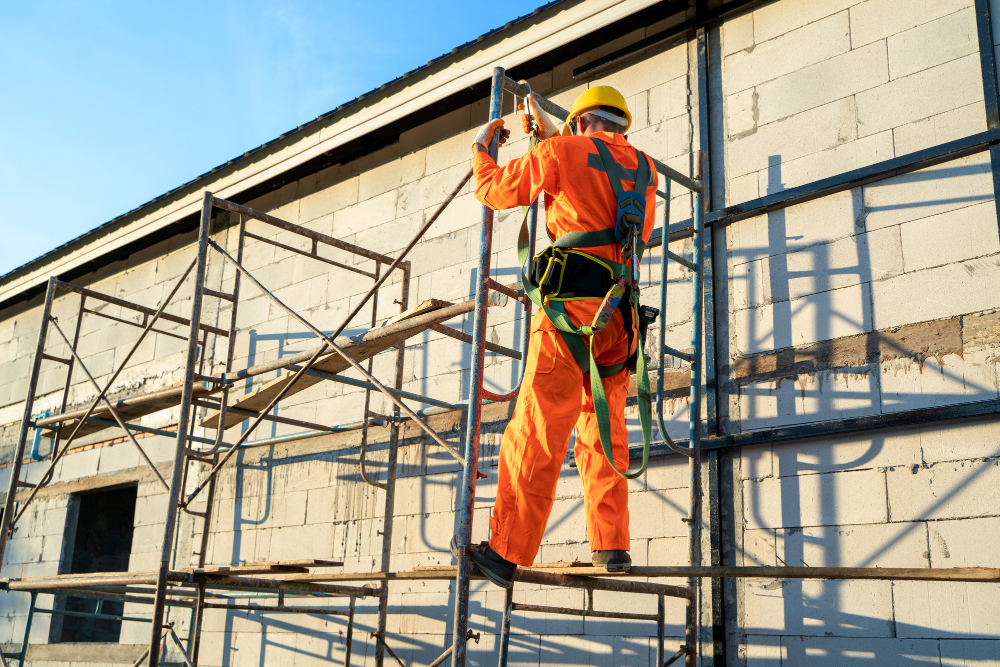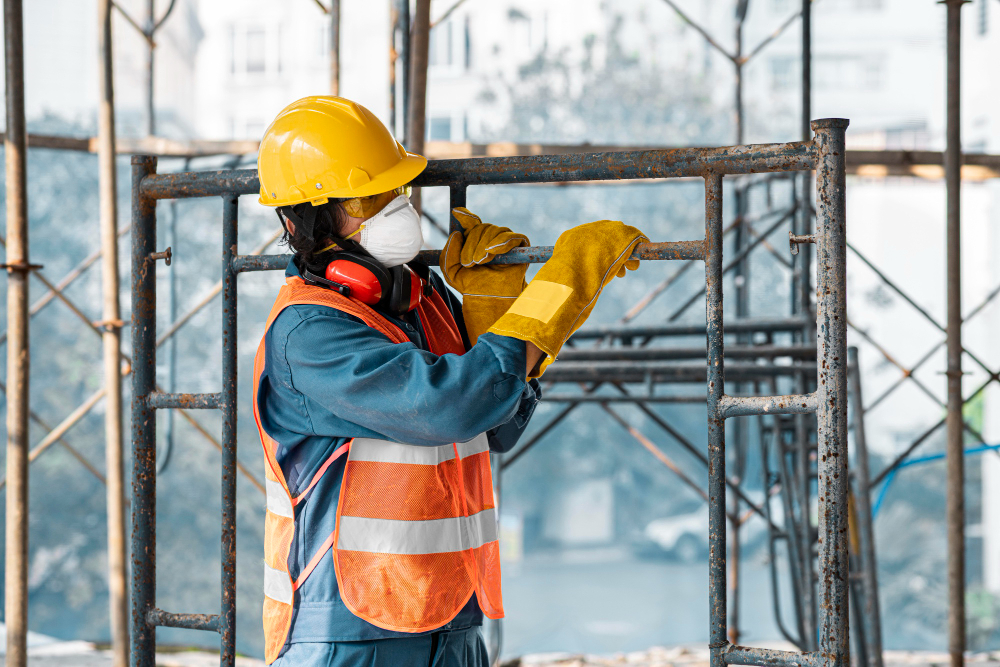Last updated on
Having a job that requires you to climb scaffoldings can be very risky. Handling heavy materials is another challenge, requiring strength and physical stamina. The potential for falls is very high, especially if you suddenly feel dizzy because of heat or fatigue.
As a scaffolding installer, you’ll be exposed to various weather conditions, such as extreme heat, cold, or rain, which can further increase the risks involved. However, it’s not all doom and gloom. In this article, we will uncover the main causes of deaths and injuries on scaffolds, and provide you safety measures to mitigate these risks and ensure your well-being on the job.
So, are you up for the challenge? In that case, it’s crucial to know the potential dangers of working as a scaffolding installer and take the necessary precautions to keep yourself safe.
Working at Heights

Working as a scaffolding installer requires you to have a strong sense of balance. There is always the possibility of falling, which could result in severe injuries or even death.
According to Charlotte workers compensation Attorney Bobby L. Bollinger Jr, falls are the leading cause of workplace deaths in the United States each year.
Before deciding to work as a scaffolding installer, make sure that you understand the risks and the requirements for this job. It doesn’t only require a great deal of focus or precision but also physical strength to work at heights for extended periods. It’s not a job for the faint-hearted, but for those willing to take the risk, the rewards can be worth it.
Handling Heavy Materials

Lifting those hefty materials can put a strain on your body, but don’t worry; we’ve got some tips to help you out!
When handling heavy materials as a scaffolding installer, it’s important to prioritize your safety and prevent any potential injuries. First and foremost, wear appropriate personal protective equipment, such as gloves and steel-toed boots, to protect your hands and feet.
Always use proper lifting techniques, such as bending your knees and using your legs instead of your back, to avoid straining your muscles.
It’s crucial to communicate and work in teams when dealing with heavy materials. This way, you can distribute the weight and reduce the risk of accidents or overexertion.
Potential Falls and Collapses

Don’t let potential falls and collapses dampen your excitement for the job! As a scaffolding installer, you face certain risks, and one of the most significant is the possibility of falls and collapses.
Working at heights can be exhilarating, but it also requires utmost caution and adherence to safety guidelines. It is crucial always to wear proper fall protection equipment, such as harnesses and lanyards, and to ensure that the scaffolding is sturdy and secure before stepping onto it. Regular inspections and maintenance of the scaffolding are necessary to identify any potential weaknesses or hazards.
Being aware of your surroundings and maintaining good balance and footing can help minimize the risk of falls. By staying vigilant and taking necessary precautions, you can mitigate the dangers associated with potential falls and collapses in your line of work.
Exposure to Weather Conditions

As a scaffolding installer, you constantly work outdoors, leaving you vulnerable to the elements. Rain, snow, wind, and extreme temperatures can all pose risks to your safety.
Proper clothing and equipment are essential in protecting yourself from these conditions. Wear waterproof and insulated clothing to stay dry and warm during wet or cold weather. Wear a hard hat to shield yourself from falling debris during windy conditions.
It’s also crucial to regularly check the forecast before starting your workday. This will allow you to anticipate any severe weather conditions and take necessary precautions to ensure your safety.
Remember, being well-prepared is key to minimizing the risks associated with exposure to weather conditions. Stay prepared for exposure to weather conditions by wearing appropriate gear and keeping an eye on the forecast.
Safety Measures and Protective Equipment
To ensure your safety while working outdoors as a scaffolding installer, ensure you’re equipped with the necessary safety measures and protective equipment.
First and foremost, always wear a hard hat to protect your head from falling objects. Wear a high-visibility vest to ensure that you are easily seen by others, especially in areas with heavy machinery or traffic.
It is crucial to have proper footwear, such as steel-toed boots, to protect your feet from potential hazards. Utilize safety harnesses and lanyards to prevent falls and ensure they’re properly secured and inspected regularly.
Lastly, always have a first aid kit readily available for accidents or injuries.
By following these safety measures and using the appropriate protective equipment, you can minimize the risks associated with working as a scaffolding installer.
The Takeaway
Working as a scaffolding installer can be a risky job. You must deal with working at heights, handling heavy materials, and potential falls and collapses. You are also exposed to various weather conditions.
However, by following safety measures and wearing the appropriate protective equipment, you can minimize these risks and ensure your safety on the job.
Stay vigilant, take necessary precautions, and prioritize your well-being while working in this challenging but rewarding profession.
Recap




